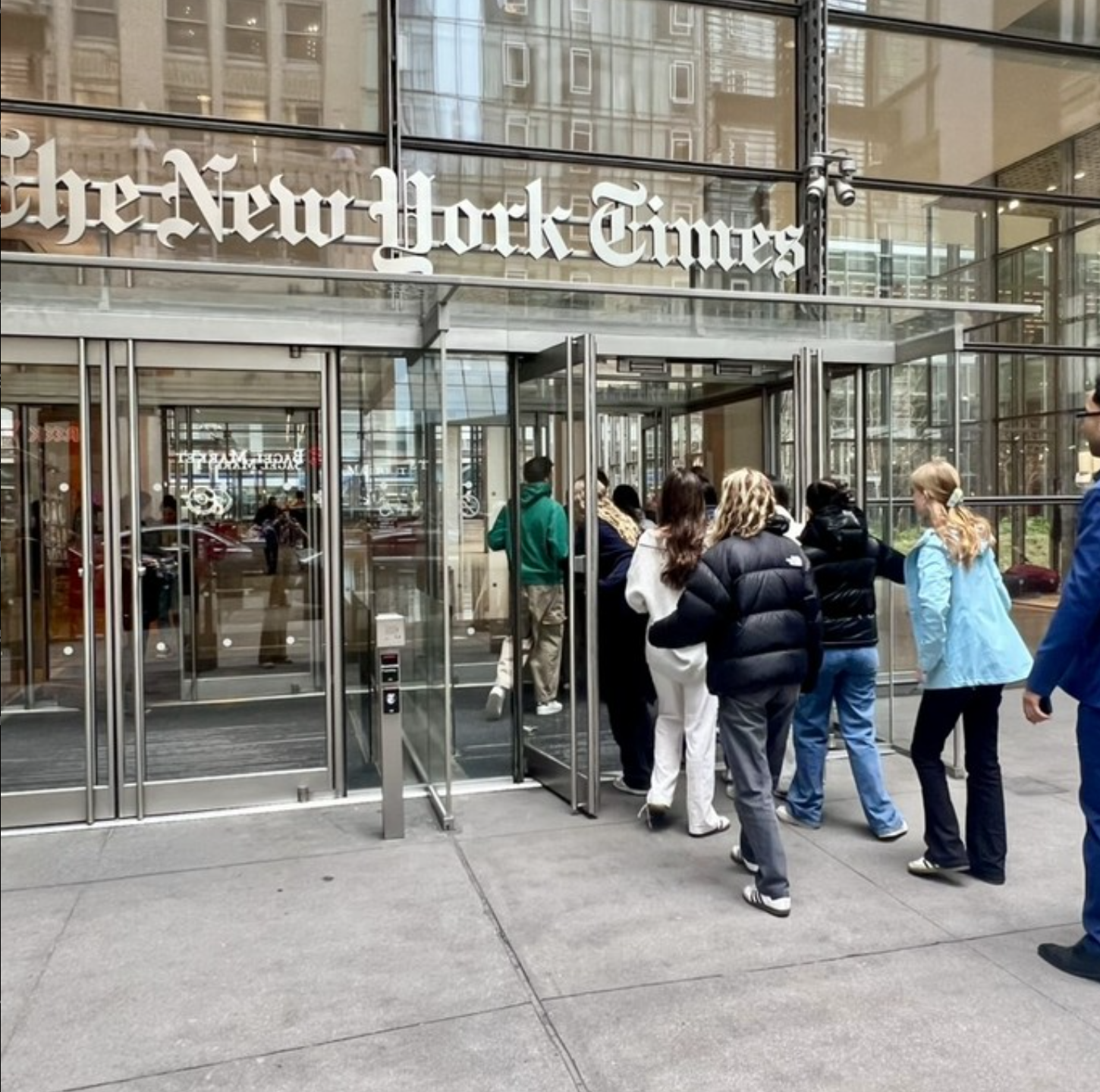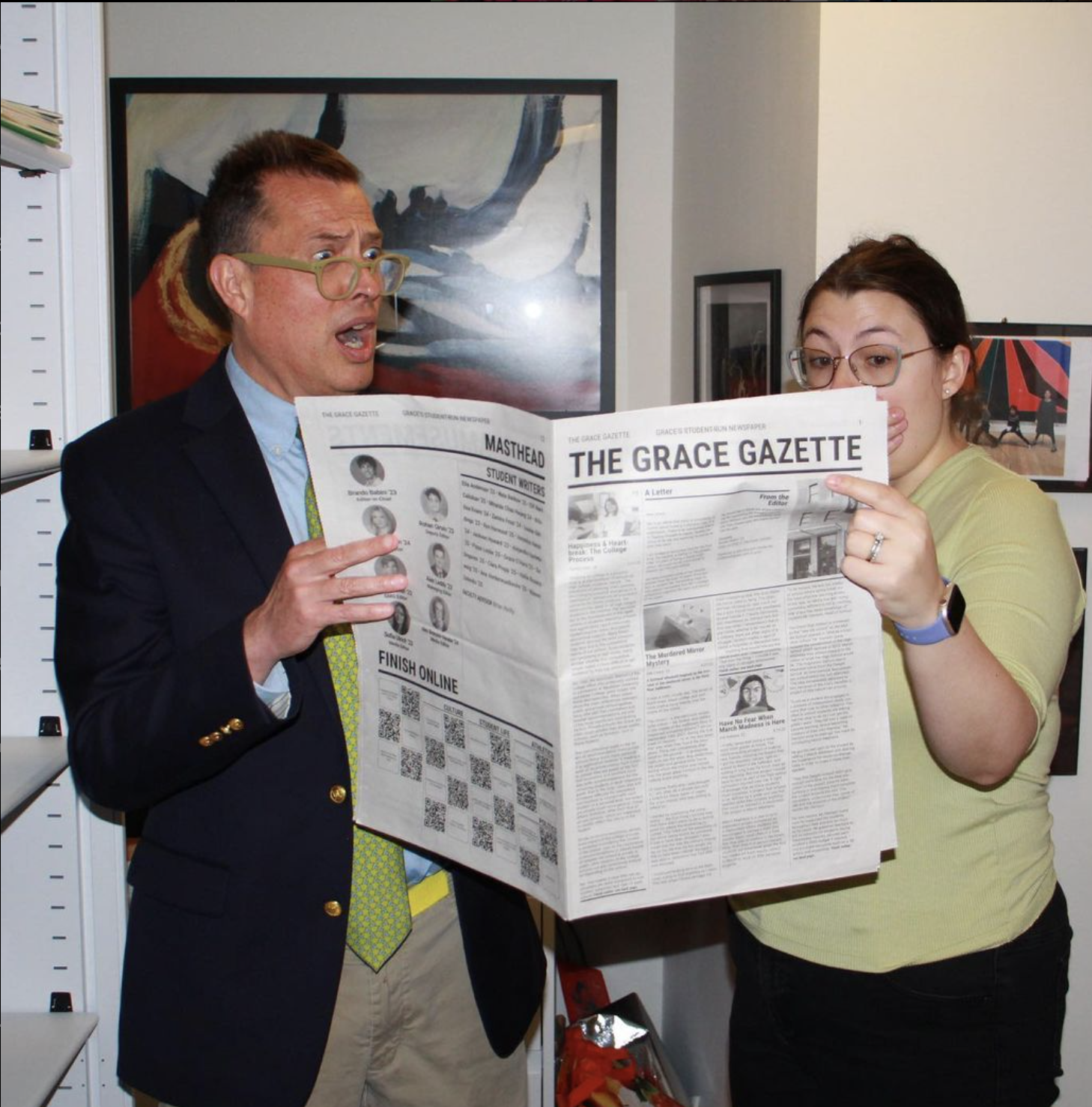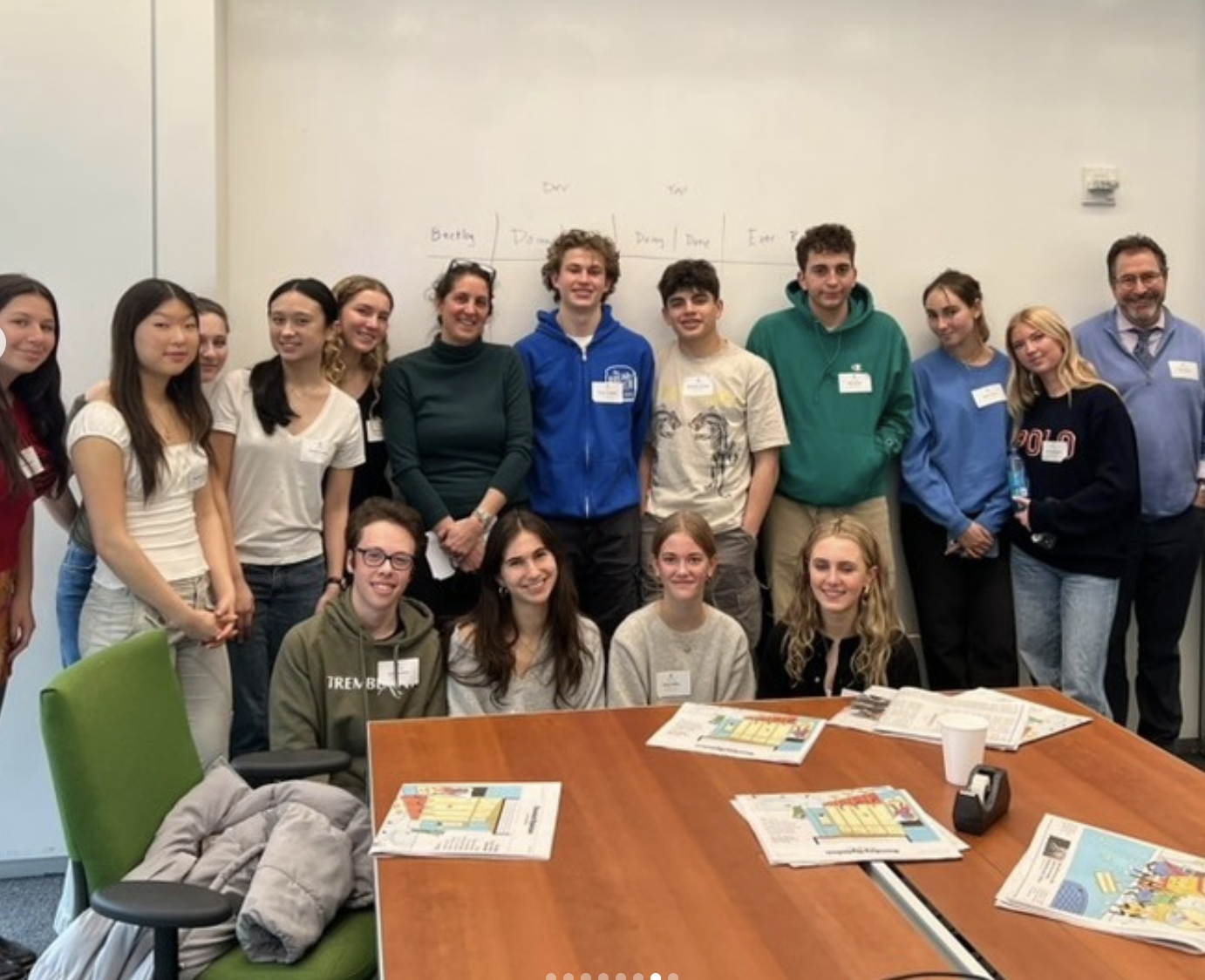Grace Gazette Update
Reinvigorating the community around the school newspaper

Background Information
When Veronica got to Alzar, she learned what community engagement could look like in a school. Through being a student leader advocating for the group, and watching others do so as well, she learned what change can occur when people care.
At Veronica’s lower and middle school, a huge amount of the community was centered around the print newspaper. From before she could read, she remembers walking into school with a quarter in her fist to buy the new edition. Her whole class would circle around a table, gathered over someone’s shoulder, to find themselves in the pictures, or identify the only words they knew: their names. When she got older, she got the opportunity to join the newspaper, and it was an incredible experience to have. The students were pushed to cover topics outside of their school community and to go around the city for interviews, searching for opinions. As middle schoolers, they learned so much about the world, themselves, and their community through the work that they did on the paper. It was magical to see how excited the community was, students, parents, teachers, administrators alike all waiting in line to pick up the latest copy.
As an incoming freshman at her new school, she was so excited to get to sophomore year and finally be able to join the journalism class and write for the paper. She wrote her first several articles on challenging and risky topics. The process of getting them edited and published was delayed and frustrating, but finally they were published in their digital app. And yet, no there was hardly a recognition that they had even been published and change didn’t occur until she pushed more directly with the administration. The problem she realized existed at her sending school was that the wider community barely knew about the paper, and if they did, it was in a very peripheral scope. How can you care about something you barely know exists?
Implementation of Project
For her Capstone Leadership Project, Veronica wanted to engage the wider community in the school paper, and start by improving it from within. She believes that the paper could be an important vehicle to build community within her school. Her first goal was to create a more organized and productive atmosphere within the paper. But she knew that in order to do that, she would have to get some people on her team. So, she created a slide deck and pitched her idea and plan to her journalism class, editors, and teacher, as well as her head of high school.
They all agreed that these were necessary changes, but as she already knew, former editors had already tried, unsuccessfully, to implement some of them. She knew she would have to commit a lot of work to creating this plan and that as the senior editors were phased out and graduating, she would be working mostly on her own. It was daunting, but she knew that the paper could be a massive vehicle for change and create the kind of culture she loved at Alzar.
Almost right off the bat, she was able to organize the paper into “beats,” a group of people writing on similar topics. Depending on what a certain writer was working on, during the class period they now sit with an editor and a few other people working on related projects. This has massively improved the paper’s efficiency and ability to communicate within the paper. There are also some technical issues within the app itself. For example, the byline of an article with the name of its author is often incorrect. However, Veronica is working with the Tech Department on transferring the newspaper onto a new and more modern software that will resolve these glitches.
More importantly, she has been working to increase the paper’s readership. The first step was to begin sending out email blast updates to the community, letting them know what has been published recently. Additionally, their new Editorial Director is helping by keeping the paper’s Instagram even more current, posting updates with a link every time a new article is published.
What’s Next
The team’s next step is to implement more regular print editions. Since the high school’s birth, there has only been one print edition published, which got the community extremely engaged and excited. Veronica documented several photographs from that day, evidence that the paper could be so much more central if it printed regularly. Though the cost is high, she has gotten a commitment from the Parent Association to be their partner in this project. Because of the nature of organizing something like this, they will not be able to print their first edition until the fall semester, but they are currently warming up to do so.
Finally, and perhaps most importantly, she believes that people are more likely to read the paper if they have a personal stake in it. Currently, only students in the Journalism class, Gazette staff, are able to be published. Therefore, she is working with her teachers and editors to create a new column of the paper in which submissions from members of the larger community such as teachers, administrators, parents, and students outside of the Gazette could be published. Whether an Op-Ed piece, a letter to the editor, or some kind of announcement, the paper and the greater community would really value their contribution. A member of the faculty, a grade dean, the head of the athletics department, and two student affinity group leaders have already enthusiastically committed to submitting pieces next fall.
Even though this was not the timeline she had anticipated, she was able to adapt to the challenges that came her way, such as the delays during the editor’s transition. In a playbook for the future, she has outlined a detailed plan for what is to come and next year’s editorial staff have already started following it.





